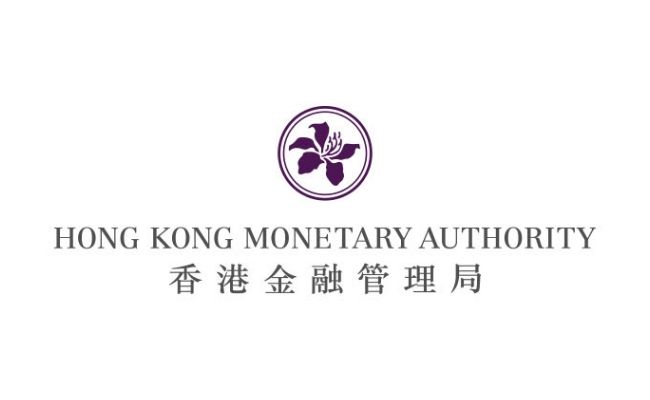Philippines Pushing For Cashless Society, But It’s A Long Way Off
TECHINASIA: Imagine the day when scanning your face, waving your phone, or using some kind of a wearable are the new norms of paying for goods and services. The transactions could be anything – from buying a train ticket to sending money to a relative, buying clothes in the mall, or riding a jeepney.
The world dreams of a cashless society. And as it acquires a multitude of non-cash payment options, this dream only comes closer. The progress of economies varies, though. In Hong Kong, one can purchase tickets or eat in fast food outlets using the Octopus value card. In Sweden, the homeless no longer ask passers-by for loose change; they have card readers instead. While the cashless journeys of some may be advanced, those of most, especially developing nations like the Philippines, have only just begun.
In the Philippines, the government, USAID, and private banks have launched an initiative to create a single electronic payments platform for all transactions in the country. The initiative is part of a bilateral agreement between the Philippine and US governments.
Dubbed the e-peso, the platform is envisioned to be a B2B, B2C, and C2C system for epayments. The up to US$25 million, five-year project has been awarded to a company called Chemonics.
The overarching goal, really, is simple: to eliminate, if not substantially reduce, the use of cash in financial transactions; turning the Philippines into a “cash-lite” economy within 20 years.
Benefits of going cashless
Here’s the problem with the use of cash: it’s inefficient, costly, and can be dangerous for consumers and businesses.
“Long queues, long distance traveling, and time wasting characterize the predominant payment for goods and services in the Philippines, as elsewhere in developing countries. The opportunity cost of using cash versus electronic means has real economic consequences, in terms of lost business activities and overall economic development,” says USAID in the draft statement of work for the ambitious project.
Also, with the availability of technologies for epayments, “[cash] doesn’t make sense,” Lorenzo Tan, president of the Bankers Association of the Philippines, was quoted as saying in a report
Going cashless gets rid of costs for storing and distributing notes and coins. It is more transparent because transactions are recorded electronically and can be tracked, avoiding leakage or in the case of government deals, kickbacks. In terms of delivery, it’s also more secure and speedy.
The epayment platform envisioned under the USAID project will also allow for the poor and unbanked to participate more broadly in the formal economy. “The poor benefit from too few financial instruments to manage their low, uneven cashflows. As such, epayment systems have the potential to help the Philippines reach development goals faster and make those gains sustainable,” says USAID. It states that only 26 percent of Filipinos enjoy access to formal financial channels, and 610 out of 1,635 municipalities in the Philippines do not have banks. Moreover, as much as one‐half of mobile users in the Philippines are unbanked.
But despite the clear benefits, by all accounts, the Philippines’ epayment penetration rate remains low. USAID explains: “According to some estimates, cash accounts for upwards of 98 percent of all retail payment transactions in the country. Yet around the world, there is a growing use of electronic instruments for payment transactions. Reaching US$283 billion in 2010, the global volume of non‐cash transactions grew by 7.1 percent, dominated by developing markets (growth of 16.9 percent). In high income countries, for example, people use an equivalent of five epayment transactions per week. Without a doubt, the Philippines’ retail payment system remains highly paper‐based and inefficient.”
The e-peso project therefore seeks to accelerate the shift from paper to digital transactions. Doing so will ultimately contribute to overall economic performance, USAID says, citing how an efficient epayment system glues an economy. “A country’s payment system facilitates trade and exchange […] USAID believes that epayments can transform development and facilitate access to economic opportunity.”
Change in behavior
The dependency on cash could very well be a function of culture and behavior, and lack of access to banking channels. For instance, less than five percent of the population have credit cards, according to some fintech startups.
But on the other hand, it’s also true that Filipinos spend a bigger chunk of their lives online: the Philippines has the eighth largest base of Facebook users in the world, one of the reasons why it is touted as the world’s social media capital. And smartphone penetration is predicted to grow fast from 25 percent of the population to 50 percent by 2017. Because of high mobile penetration, the Philippines leads Southeast Asia in mobile phone payments, some reports claim. Taking all these into account, consumer readiness for digital payments in general is there.
“Something has to give,” says Ron Hose, founder of Bitcoin company Coins.ph. “The Philippines is a young and dynamic population with a proven track record that it can adapt to technology and embrace it hard. You see many people in the provinces who have little access to basic services, yet check their Android phones every day. The key is to build a bridge between the huge base of mobile-toting, increasingly tech-savvy masses and the financial services which could go a long way in improving their lives.”
John Bailon, co-founder of another Bitcoin company, Satoshi Citadel Industries, adds: “Why are we getting into digital payments only now? I believe you have in the Philippines the best use-case for digital payments. There are 110 million SIM cards across 100 million Filipinos. We’re very sociable. And finally, we’re third to giants China and India in terms of overseas remittances sent every year.”
The question then becomes: how do you change behavior and push consumers to move away from cash?
Startups a step ahead
Hose tells Tech in Asia that the e-peso initiative, if successful, could bring about change in Filipinos’ behavior. “Any step towards reducing dependency on cash will be a positive improvement. In effect, e-peso can serve as an on-ramp for the unbanked to transact online. The greatest potential impact of a project like this is in lowering the barriers to digital payments, as well as raising the comfort level of the general populace in exchanging value through their computers or mobile phones.”
Ralph Santos, founder of fintech startup VMoney, shares the same view. “Filipinos are tech savvy already. They love technology, they love gadgets, they love using it. They’re very open to modern methods, if you’ll look at what has happened in the last five years. They’re using technology for transactions. They use it to send money to each other. But it’s on a personal basis. Now we should allow for a holistic solution – borderless, ubiquitous, agnostic.”
In fact, if we’re talking about a single epayment platform, VMoney already has one in place. “They’re looking to build it in five years, we have it today,” Santos says.
VMoney is an end-to-end fintech startup that enables businesses and consumers – both banked and unbanked – to access, send, and receive money digitally. Just sign up your email address on VMoney’s platform, and provide personal information and a valid ID. Once verified, you can top up your account through web banking, over-the-counter facilities, scratch cards, or ATMs. You can use your account for several types of transactions – from transferring funds to other VMoney members and paying your bills to buying prepaid credit for your phone. The company has a range of products that allow users to shop online or at retail stores, or within the network of VMoney-affiliated merchants that offer rewards.
Santos says they had planned to bid for the e-peso project, but they were “too late.”
“I have engaged them, we’ve emailed them. We’ve sent them catalogues. So far it’s good. They haven’t turned us away. We’re still going to operate in parallel. We’re going to push forward but we want to sit down with them and say, why don’t you just support us and implement us in the next 12 to 24 months then maybe in 10 years instead of 20 years, we become a cashless society,” explains Santos.
For an epayment platform like VMoney and the e-peso initiative to succeed, there should be “critical mass” of both supply and demand users, Santos says. USAID points to the same thing: “In order for the rate of epayment adoption to be self‐sustaining, this financial innovation must become popular, widely used, and universally accessible.” It states that “interoperability” among various epayment instruments in the market must be possible so platform usage can be increased.
Curbing corruption
Aside from this, other factors such as a sound regulatory environment and consumer protection must exist.
In terms of adoption, USAID says the epayment platform must be widely used by government, the private sector, including large, small, and medium enterprises, merchants, and consumers.
President Benigno Aquino III announced early this year that cashless transactions would be implemented among agencies to further plug leaks and curb corruption. “Cashless purchase cards” will be used for medical supplies, meals, transportation, airline tickets, and construction supplies for government agencies.
“Our goal is to institutionalize reforms that make it very difficult for unscrupulous individuals to steal from the people—regardless of who sits in office. This is where the introduction of cashless transactions comes in,” Mr. Aquino said of the move. His budget secretary, Florencio Abad, added: “the cashless purchase card will not just allow us to prevent bribery, graft, and corruption in the procurement process, it will also help us spot possible irregularities as they’re happening, as well as make accounting and auditing a much quicker process.”
USAID says epayments may also be implemented for disbursement of government benefits such as salaries, pensions, and social welfare stipends. “Government systems serve as important mechanisms for increased transparency, efficiency, and trust in government. When payments are made in electronic money directly to mobile phone wallets, cost, security concerns, and government leakage can potentially be reduced.”
The same is true for the private sector. Many large companies already rely on epayments in their business dealings. However, a large untapped opportunity exists for bringing the benefits of digital payments to companies of all sizes. The private sector can reduce many of the costs related to hard currency payments surrounding payroll and supplier payments, USAID says. For employees, electronic money will imply a more secure mode of receiving salaries. “Employees traditionally paid by direct credit to their ATM payroll account will enjoy additional options to cash out at locations other than bank service providers.”
Something tangible
The uptake of large merchants and leading malls is also important to enable wider adoption among consumers.
The central bank will also take on the role of regulating and overseeing the country’s payment system. Rules for consumer protection must be in place. “Interventions will promote standards of good practice in financial services for consumers, in such areas as privacy of client data, liability protection, and access to an underserved population,” notes USAID.
The e-peso initiative may not lead to a cashless society, but a “cash-lite” one at best. There is still something very compelling about cold, hard cash. Any change will face resistance: the unscrupulous will not easily let go of an anonymous and untraceable mode of payment. Cash is also preferred by those who simply want something tangible to hold in their hand, especially the older generations. The hope is that they will eventually adapt. “We’ve done this before – from cash to check to cards. We’re moving to phones and a whole lot of options. Just give them something tangible to hold first, they’ll transition better,” Santos concludes.




